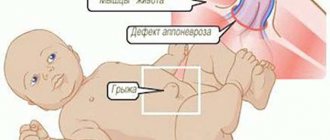A child does NOT freeze if he has: - a cool (not icy) nose and cheeks (the air is cold in winter);
- cool (not icy) hands, back and butt (the butt does not get hot of its own free will, especially in girls due to natural characteristics).
How to determine if you are frozen? — The main criterion is the behavior of the child himself. The child reacts very violently to the cold - screams loudly, moves. The skin becomes pale.
- on the neck, although this is not entirely correct. Along the bridge of the nose and the arm above the hand.
- icy feet (check if your shoes are too small or tight, this contributes to hypothermia)
Walking is an important element in the development of every child. This is not only a fun activity, but also great benefits for the growth and health of the baby. Walking in the fresh air strengthens and strengthens the immune system, increases appetite and improves sleep. And the sun's rays fill the baby's body with vitamin D, so important for newborns. But during a walk, the child may freeze and become hypothermic. Let's look at how to determine if a child is cold.
Features of hypothermia in children
Hypothermia implies a general decrease in temperature, while the body cools down completely. In this case, the activity of the body decreases and breathing weakens, the speed of blood circulation decreases and muscle movements slow down, and the heart rate drops. And this can happen not only in winter. It all depends on the weather, how long the walk lasts and how the child is dressed.
Hypothermia occurs due to the fact that the baby is not dressed correctly, as well as when staying outside for too long. It is important to prevent hypothermia, otherwise the child may get sick. Moreover, it can be not only a common cold, ARVI or flu, but also a more complex disease. For example, bronchitis, laryngitis, otitis media, rhinitis, pneumonia. But if measures are taken in a timely manner, the child will not get sick.
If adult children can report that they are cold, then this is impossible for a one-year-old baby. Hypothermia is most dangerous for children under one year old who are still walking in a stroller and do not move much. In addition, at this age, thermoregulation processes are still just being formed. Therefore, the younger the baby, the faster he freezes.
To avoid colds and hypothermia, it is important to carefully monitor the condition of the baby. Let's look at how to understand that a child is cold outside. Let's find out what to do to prevent hypothermia. And let's look at how to help the baby if he is already cold.
Meaning of the word coldish
Examples of the use of the word chilly in literature.
It seems to me that Mr. Willy Messerschmitt respects front-line soldiers and readily provided me with the widest field of activity,” Hopfitz said coldly, in order to get rid of naive questions in the future.
In the morning, the warrior may feel a little cold, and some stiffness in the joints is also felt, but as soon as the battle begins, he quickly comes to his senses.
Our tombak samovar has long gone out, and a chilly dawn is creeping stealthily across the windowsills.
I think that what I have told quite convincingly indicates that this merciless mocker, scourging people’s stupidity and vices, a secular man who knew how to behave with cold aloofness, was endowed with an unusually responsive heart, which is confirmed by his writings, and knew sincere spiritual impulses that bring honor to everyone to a person.
And again, when he said this and, out of habit, crossed his arms tightly on his chest, Nikitin came across an unusually poisonous, wet shine in Samsonov’s eyes, as if now he lacked the will to reduce the excessive ardor of displeasure - and somehow he felt cold, bitter, Nikitin feels empty from this senseless attack of anger against himself.
Lying on his back, Boris still looked thoughtfully into the cold blue sky, and Gulyaev thought that this young, healthy officer cared little about his words, about outright concern, not provided for by any regulations - they knew each other from Stalingrad.
Myasnitskaya was located in a vaulted basement, was well lit, and Mikhail Nikiforovich immediately understood why Petya Drobny, always correct and cold, seemed excited to him today.
The authorities know best,” Kravchenko repeated, just as coldly, but it was clear in his tone: he thinks of Nogtev as a specialist.
“It’s a little cold,” Lasker noted, although by local standards the day was considered quite warm.
And the trappers - some went home, some went to the club, and some settled right there in the boardroom, in the cold corridor on a bench, smoking, listening to the voices of the aviators coming from behind the door and expressing their judgment about everything that was new and unusual, which came into their lives and changed many of their usual ideas.
At dawn, Gleb left, it was still dark in the yard, a coldish rain was drizzling, as if brought by a northern bride, Yaroslav prayed in the church and thought about how badly his younger brother had done it, that he didn’t even come on the road to bow to God.
“I received reports about what is happening in Petrograd and Moscow today from Headquarters,” Ruzsky said coldly, without servility.
The head is raised proudly and calmly, and the same expression of mysterious, slightly cold peace is in the direct, clear gaze of slightly tired eyes, in the fold of half-childish lips, in the lovely oval of the elongated face.
The unbridledness of this sixteen-year-old girl only intensified his happiness - already by the way she pulled her shoulder blades together, purred, threw her head back when he was just undressing her, tickling her with his lips, Kretschmar realized that it was not the coldish drag of innocence that he needed, but precisely this frisky natural responsiveness.
In the first moment, this extraordinary, mysterious forest stood before him, the deep, motionless darkness under the trees, the strange light of the moon, the white cold body of a woman, her closed eyes, a stupefying viscous smell, a burning desire reaching the point of frenzy.
Source: Maxim Moshkov library
How to understand that a child is cold: signs of hypothermia
- The main sign is coldness behind the collar, on the back, on the arm above the wrist and under the hat. To check your baby, place the edge of your hand under your clothes. If the skin is warm and dry, the baby is not cold;
- Sharp paleness of the skin and lips. Paleness of the skin occurs due to slow blood circulation. This indicates that the baby has become hypothermic and is very cold. And if the baby’s cheeks, on the contrary, are rosy, then everything is fine;
- The fingers and backs of the hands become cold and purplish-red in color, go numb and lose sensitivity. When rubbing your palms, your baby will feel a burning sensation and pain. Numbness of the limbs indicates severe freezing;
- The child becomes lethargic, indifferent and apathetic. He stops vigorous activity, loses interest in walking, shrinks and trembles, or moves slowly;
- Children under three years old experience severe and sudden drowsiness. They may cry quietly at first and then fall asleep. In this case, the face of a baby sleeping in a stroller becomes pale, white spots appear on the skin, and the nasolabial part of the face becomes bluish.
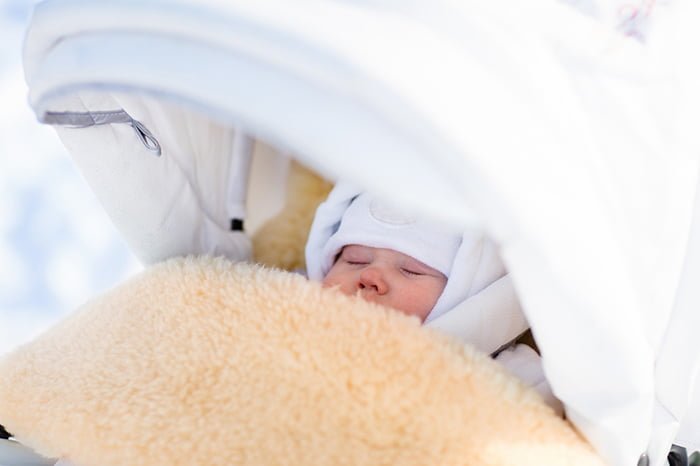
A child is not cold if he has cool or even cold hands, cheeks and nose, but at the same time he is cheerful and cheerful, actively jumps, runs and plays. Your baby's skin may be cold on exposed areas of the body due to the cold winter air. But this does not mean that the baby is cold.
Signs of hypothermia. How to understand that a child is cold?
Parents often feel the exposed areas of their child's body while walking. Even if children’s hands, cheeks, and ears are frozen, this is not a sign of hypothermia. The lower the air temperature, the colder the skin will be - this is how the body retains heat. There is no need to worry if the child is cheerful and active, his skin is not too pale or even pink, and he is warm under the hat and behind the collar.
However, this does not mean that the risk of hypothermia is excluded. The younger the child, the faster he freezes - thermoregulation mechanisms are still imperfect. Hypothermia is especially dangerous in children under one year old - a child lying motionless or sitting in a stroller quickly freezes, cannot warm himself, and parents do not even notice it. This is why it is so important to know the signs of hypothermia and prevent your child from freezing in the stroller.
So, how can you tell if your child is cold? The following symptoms will indicate this:
- Sharp paleness of the skin;
- The appearance of clearly defined pale spots on the skin;
- Pallor of lips;
- The skin of the fingers and the back of the hand becomes cold, numb, loses sensitivity, and acquires a purplish-red color. When rubbing the skin, the child experiences burning pain;
- The child stops vigorous activity, shrinks, trembles;
- The child moves slowly, becomes lethargic, apathetic, indifferent to what is happening;
- No warmth is felt under a hat or collar;
- The small child stops screaming, begins to cry quietly, and falls asleep.
Parents need to know what can cause or contribute to hypothermia:
- Wet shoes, sweaty socks and tights;
- Wet, damp outerwear;
- Shoes or clothes that are not appropriate for the weather - too light or, conversely, too hot;
- Tight, constricting shoes or clothing;
- High air humidity, strong gusts of wind;
- Cold food or drink on the street;
- Low physical activity while walking.
What to do if your child is cold
Hypothermia, especially severe and prolonged, reduces immunity, as a result the child can catch a cold and get sick. As soon as you realize that your child is cold during a walk, immediately go into a warm room or return home. If this is not a newborn, but an older baby, on the way home, make the baby actively move, wave his arms, run and jump.
If the child is cold and he is still sitting in the stroller, but already knows how to walk, bend his legs, play palms and rub his hands together. Blood circulation will increase, the baby's legs and arms will warm up. With a newborn or an infant up to six months old, immediately go to the nearest warm room, for example, a store. Wait until the skin turns pink and it becomes warm under the hat and behind the collar. This indicates that the little one has warmed up a little. After that, go home immediately.
When you arrive home, immediately remove your outer clothing and shoes. Dress the baby in dry and warm clothes, wrap him in a blanket and give him a warm drink or feed him warm broth. If your child gets warm and sweaty, change wet clothes immediately, otherwise he may become hypothermic again!
Warm tea or drinks with lemon, rose hips, honey and ginger, cranberry or lingonberry juice or jelly have an effective warming effect. At the same time, the drink should not be scalding and hot! Such drinks will not only warm the baby, but also strengthen the immune system and protect against colds. How to prepare healing jelly for babies, see here.
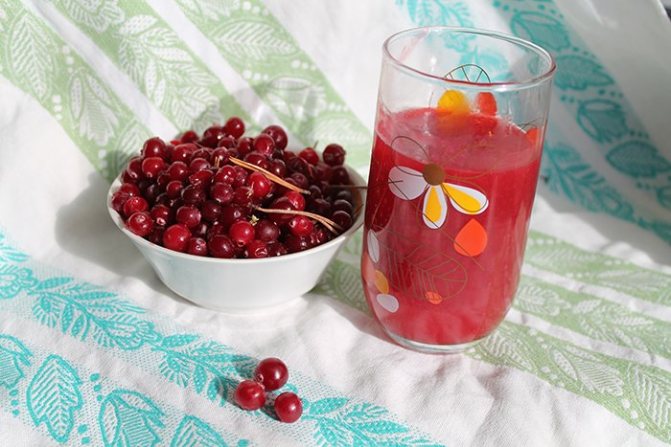
How can you find out if a child is cold outside?
To determine whether a newborn baby is freezing outside, you need to pay attention to the main signs of lack of heat. The baby is dressed incorrectly and freezes if:
- The skin and cheeks turned pale.
- The nose becomes “icy”.
- You can feel the cold under the edges of your outerwear and hat.
- The fingers and backs of the hands became cold, lost normal sensitivity and acquired a dark red tint.
- Became less active, does not show interest in going for a walk, and begins to move less.
- Shrunk and trembling.
There is no cause for concern if the child’s cheeks, hands, and nose become cool, but he still enjoys the walk, and the skin under the headdress and outerwear remains dry and warm.
How to tell if your baby is freezing in a stroller
You can find out that a baby is cold in a stroller in winter by the sudden appearance of severe drowsiness, decreased activity, indifference to the outside world, and quiet crying. During sleep, a child's face first turns red, then becomes pale. White spots appear on the skin, and the nasolabial “triangle” becomes bluish. Often, infants who are cold begin to hiccup.
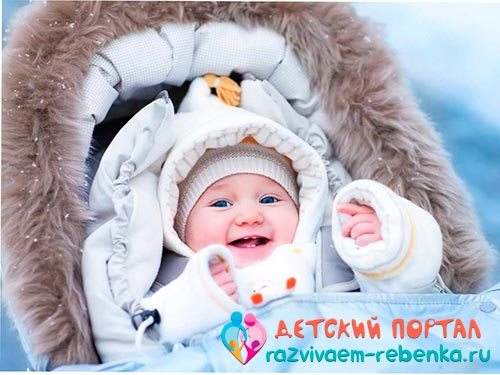
What to do to keep your child from freezing
To understand what to do to keep the baby from freezing and to make the baby comfortable while walking, you need to determine the causes of hypothermia. First of all, these are clothes and shoes that are not suitable for the weather. They may be too light or, conversely, too hot. Things should not be tight or constricting.
The cause of hypothermia is damp clothing, socks and tights, and wet shoes. Therefore, regularly check things for dryness. If the baby is wet, if the child’s feet are cold, immediately go home to change clothes. In addition, a child may freeze if he moves little during a walk.
Do not give your baby cold drinks or food while walking outside! Do not bottle feed your baby outside during the cold season! In severe frost, wind or humidity, do not walk for too long. In this weather, 30 minutes is enough.
Hypothermia occurs not due to frost and low temperature, but, first of all, due to strong cold wind and/or high humidity outside. In any case, it is important to dress the child correctly and organize the walk correctly. Let's take a closer look at how to dress your baby in winter. And we will learn the rules of walking for babies.

Rules for walking with a baby
- It is not recommended to walk with an infant in severe frost, strong wind or high humidity, extreme heat, or a snowstorm;
- You cannot walk with your baby if he is sick. However, during the recovery period, when the temperature has already subsided and the pain and weakness have passed, short walks in the fresh air are recommended. This will speed up recovery, restore the body faster and strengthen the immune system after illness;
- The first walk with a newborn can be done within a week after the baby is born. However, it is important to consider the weather. If it is too cold or hot outside, it is better to postpone your walk;
- At first, in winter you can walk for 10-20 minutes, in summer - no longer than half an hour. Gradually increase the duration of your walks by five to ten minutes;
- When the baby has already gotten used to fresh air and new conditions, in comfortable weather it is recommended to go for a walk two to three times a day. In this case, the walk time can be 1.5-2 hours;
- Dress your child according to the weather. Avoid wearing tight or too hot clothing. At the same time, it should not be too loose. The younger the child, the fewer free areas of the body without clothing should remain.
How to dress a child for a walk in the cold season
In the first two months of a baby’s life, it is important that a minimum of areas of the body remain free from clothing; it is important to securely cover the back and abdomen. Therefore, a solid sleepsuit or overalls would be a suitable solution. It is recommended to dress your child in several layers. This will ensure a comfortable temperature, and at the same time, if necessary, you can easily remove the layer if the child becomes hot, or you go to a store or clinic.

Clothing should be comfortable and made from hypoallergenic fabrics. It should not constrain or limit movement, get wet or be too loose. Today, manufacturers offer a lot of different options for winter clothing for young children. This is a comfortable and light winter overall, jacket and pants, mittens, hats and other items that are warm and comfortable to move around in.
Modern winter clothing includes several thin layers of special breathable and waterproof fabrics with light and warm insulation. Many things can be combined and modified due to removable parts, which is very practical and rational. The most popular companies are Reima, Kerry, Lassie, Lenne and others.
Choose clothes according to the weather, taking into account not only the temperature, but also the wind speed and humidity level. Pay attention to whether it is sunny outside or whether it is snowing or raining. For children under one year old who move little and sit in a stroller while walking, choose warm envelopes.
Despite the fact that the temperature outside the window is rapidly moving towards the minus mark, no one has canceled walks in the fresh air with the child. With older children everything is much simpler; just ask if the child is hot or maybe he is cold and get a clear answer. But what about kids who still can’t talk about what they feel? We have collected effective tips for you that will help you determine whether your baby is cold or everything is fine.
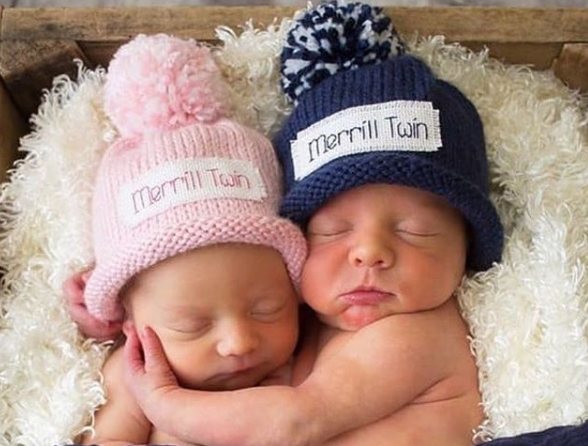
How to determine if a child is cold outside
During winter walks, you need to check the baby's condition every 10-20 minutes. Parents are advised to touch the baby's cheeks and nose. If they are slightly cool, but not icy, you can continue your walk. You shouldn’t rely only on body temperature. Close attention should be paid to behavior. When a baby in a stroller begins to freeze, he is inactive, lethargic and indifferent to the world around him.
The following signs may indicate that a child is cold:
- loss of interest in walking;
- sudden drowsiness;
- lethargy and bad mood, crying;
- pale face;
- icy cheeks, nose and hands.
In order not to worry that your baby may freeze, you need to dress him warmly and comfortably. You should also choose a modern stroller that will reliably protect you from wind and precipitation.
Table 1. Features of warm clothing for children
| Type of clothing | Peculiarities | Purpose |
| Jumpsuits | Sewn whole, with trousers or in the form of an envelope. Made with warm linings and insulation made of down, holofiber or padding polyester. | For winter wear. Reliably protect from frosty wind. It is better to choose transforming overalls, to which a hood, mittens and booties are attached. |
| Hats | Children stay warm in hats with ties. Hats for babies are made from wool or fleece lining. | Babies wear it in any season. In summer, thin models made from natural fabrics are chosen, and in cold weather, insulated ones. |
| Jumper | Insulated sweatshirts with long sleeves and a hood. Made from natural materials. For children from 6 months. | In winter, you can wear it under overalls or a jacket. In a jumper, children will not freeze in warm weather in autumn or spring. |
| Socks | To ensure that children’s feet are always warm, products made from natural materials are selected. | In summer they are worn under booties, in winter - in warm boots, boots or felt boots. |
Important!
It's important not to overdo it. Wrapping your baby up too warm can cause overheating. Then the likelihood that the baby will get sick increases (he will sweat, and then he may get wet or be blown by a cold wind). If exposed areas of the body remain cool, this is not a problem; the child needs to be hardened from childhood, gradually accustoming him to the cold.
conclusions
You can tell if your baby is cold by his behavior and condition. If a baby is cold, he becomes lethargic and pale, and he really wants to sleep. When walking outside, especially in winter, you should periodically check your nose and cheeks. They may be cool, but they should not be allowed to suffer from hypothermia or frostbite.
Walking is an important element in the development of every child. This is not only a fun activity, but also great benefits for the growth and health of the baby. Walking in the fresh air strengthens and strengthens the immune system, increases appetite and improves sleep. And the sun's rays fill the baby's body with vitamin D, so important for newborns. But during a walk, the child may freeze and become hypothermic. Let's look at how to determine if a child is cold.
The back will tell you
One of the universal ways to determine whether a child is comfortable in the clothes you have chosen for him is to touch the back, neck and under the arms after a walk. If the neck and back are warm, and there is even a little moisture under the arms, then the child is too hot in the outfit you have chosen for him. In this case, you need to remove one of the layers of clothing (if you practice layering) or choose less warm outerwear.
If after a walk the child’s back and neck are noticeably cold, then next time you need to dress the child warmer. Add another blouse or change your fall jacket to a winter one.
How to understand that a child is cold outside without tactile contact
Pay attention to skin color
Whitish, pale, perhaps in the form of separate too light spots - a sign of hypothermia (cooling). Also, a bluish nasolabial triangle is an alarming signal that requires prompt action.
Oddities in behavior
More often than not, a frozen baby will not be calm and quiet, but will try in every possible way to attract attention, since he cannot otherwise talk about his discomfort. In this case, an additional warming layer should be added if other causes for concern are unlikely.
However, with severe hypothermia, the opposite phenomenon occurs - the child “hibernates.” Therefore, when walking for hours with a sleeping newborn, do not forget to monitor his condition, and when returning from a walk, check the skin for cooling and overheating, so that next time you can adjust your choice of clothes for the street.
Emergency check
The method described above is relevant already when the walk is over. But how can you determine when it’s time to go home with your baby while you’re still outside? There are also several ways for this situation.
The first and probably the simplest is to touch the baby’s hands, nose and cheeks. If they are very cold and red, then the child is probably frozen. Also breathe on the baby's hands - if it freezes, this action will cause discomfort.
Take a close look at your baby's lips. If it is frozen, they will be unnaturally pale, and a bluish edge will form along the edge. It’s not for nothing that there is a saying: lips turn blue.
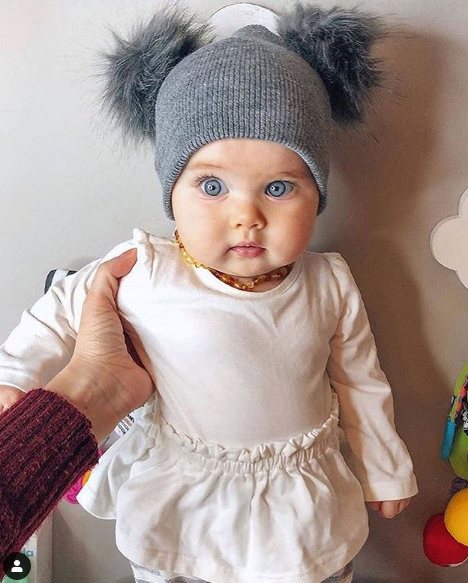
Another sign of hypothermia during a winter walk is hiccups. If a baby starts hiccupping outside for no apparent reason, it means he is definitely cold and needs to return home immediately. Hiccups may also be accompanied by trembling throughout the body. In this case, take the child in your arms and hold him close to warm him up.
How to help a child if he is cold?
Never try to warm your child by placing him in a hot bath. A strong temperature change will play a cruel joke on the child and threaten various unpleasant consequences.
There are several methods to keep your baby warm. First, dress him in clothes made from natural fabrics. Hands and feet can be gently rubbed with a towel or with your own hands to increase blood flow.
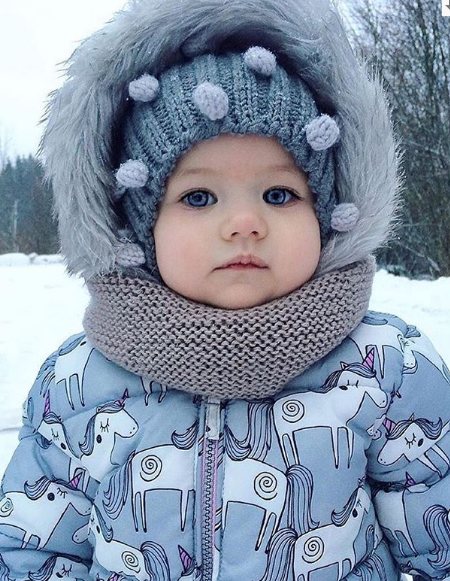
Fill a heating pad with warm (not very hot!) water and put it in bed, then place the baby next to it and cover it - the heat from the heating pad will warm the baby. Let your child drink warm tea so that the warming process occurs not only from the outside, but also from the inside.
Important! There is no need to wrap the child too hard, this is very harmful for him. Trying to warm him up will only make things worse. Firstly, an overly bundled baby will sweat, and since it will be difficult for moisture to evaporate, the baby will become wet and cold. And secondly, in the long term, such an approach will cause a number of problems, because the baby’s thermoregulation will be impaired. And, as a result, weak immunity and constant illness.
The editors' opinion may not coincide with the opinion of the author of the article.



